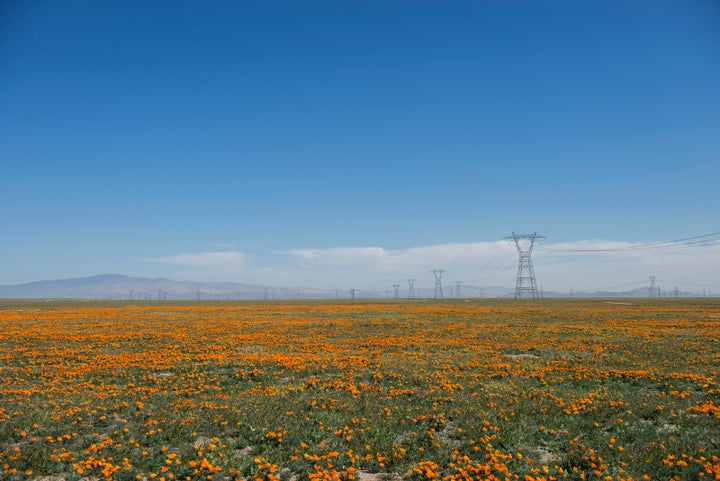
Here at the Aspen Ideas Festival, climate change is a much bigger topic of conversation and focus this year. People want to know what the outlook and game plan should be after President Trump's decision to drop out of the Paris climate accord. Here is a summary of what I've been saying on panels and interviews and podcasts.
Reasons for Encouragement
1) It's not true that U.S. citizens are hopelessly divided on climate. We can find common ground (but it takes work).
At TNC, our work is guided by 1,300 trustee volunteers in 50 states and 70 countries. These volunteers are farmers and ranchers, lawyers and developers, utility and energy executives, business CEOs and college professors, government officials and private philanthropists. They are young and old, rural and urban, from red states and blue.
I'm pleased to report that this diverse group—which spans the political spectrum—is now working together in the U.S. to build broad, bipartisan support for practical climate solutions in all 50 states. They are motivated by a growing understanding of climate impacts on the places we've worked so hard to protect, respect for science and a strong commitment to civic engagement. For example:
- In Ohio, we teamed up with the Environmental Defense Fund to make the economic case for increasing renewable energy. In a big win for clean energy jobs, Governor Kasich vetoed legislation that would continue a freeze on the state's strong renewable energy portfolio standard.
- In Illinois, we supported legislation to double the state's energy efficiency goal and increase the use of renewable energy. The bill was signed by Republican governor Bruce Rauner.
- In Florida, we supported a bipartisan ballot measure that erased barriers for financing solar installations. Voters passed the measure with overwhelming support.
- In Massachusetts and New York, we are bringing together political and business leaders focused on grid modernization to lower energy costs, improve reliability and result in better climate outcomes.
- In Louisiana, we're working with farmers, the USDA and Disney to reforest marginally productive farmland along the Mississippi River to sequester carbon. It's a win-win: Disney receives carbon reduction credits, farmers are compensated for restoring less-profitable croplands and important wildlife habitat is restored.
- And just last week, 200 TNC Trustees—Republicans, Democrats and Independents—convened on Capitol Hill to let their Senators and Representatives know how much their constituents care about addressing the climate challenge now.

By tailoring solutions to circumstances in each state, we're bringing diverse groups together to find common-sense solutions to the climate challenge. We have a long way to go, but these examples show that it's just not true that we're hopelessly divided.
2) Nature can store enormous amounts of carbon.
While clean energy currently grabs the lion's share of headlines on climate solutions, restoring forests and other ecosystems could contribute more than one-third of global emissions reductions needed to reach the goals of the Paris Agreement. From the forests of the Amazon to the peatlands of North Carolina to the croplands of Iowa, this strategy has huge potential to scale. And these strategies don't just offset carbon emissions. They improve water and air quality, enhance soil health, increase agricultural yields, bolster biodiversity and support livelihoods—all on very cost-competitive terms.
As many countries move toward a goal of net zero emissions by 2050, these natural climate solutions will play a critical role in offsetting any continued use of any fossil fuels.
This is a win-win-win way to address the climate challenge that everyone should be able to support.

3) Support for carbon pricing is growing—on both sides of the aisle.
In the U.S., several groups are keeping carbon pricing on the radar in Congress and in the states.
For example, the Climate Leadership Council (CLC)—which includes 11 of the largest companies in the world (including ExxonMobil and GM) as well as former Secretaries of State, Treasury and Energy—is calling for a price on carbon emissions starting at $40 per ton, with all the revenue rebated to American households. The plan, supported by prominent Republicans, draws on free-market principles that conservatives, businesses and others have long endorsed. The Nature Conservancy is pleased to be a founding member of this group to provide support to conservatives and businesses that are willing to publicly call for a price on carbon.
Whether or not you agree with all the details of the many proposals that have been offered, let's welcome these new voices to this important dialogue.

4) China and India are strengthening their commitments.
China's and India's most recent five-year plans for reducing greenhouse gas emissions go far beyond their Paris pledges. That's very good news coming from the world's first and fourth largest emitters.
These countries are ramping up their climate ambitions in a striking and encouraging way. In Paris, China promised their emissions reductions would peak in 2030—some critics complained this was just more or less business as usual. Now China is committing to peak emissions before 2022. That's a big difference. India is similarly ramping up its commitments.
Both countries have extra motivation to up their game—they know they must address their very challenging air pollution problems by sharply reducing their use of coal. That helps a lot on the climate front, too.
Want some more good news? Recent studies suggest that the additional emissions reductions from China and India will more than offset any U.S. backsliding under the Trump Administration.

5) Support for the Paris Agreement remains strong.
As the Trump Administration steps down from U.S. leadership on climate change, the rest of the world is stepping up.
Take the Under2 Coalition, a group of 176 nations, states, provinces and cities that have pledged to reduce their greenhouse gas emissions by more than 80% below 1990 levels or less than 2 metric tons per capita by 2050. The coalition was formed even before the Paris Agreement was signed. By demonstrating what's possible, these subnational governments can work with their national counterparts to go above and beyond their Paris targets.
In the U.S., 13 states representing more than 30% of the U.S. population—including two with Republican governors—have formed the U.S. Climate Alliance, pledging to uphold the country's Paris commitments in their jurisdictions.
And the business sector is stepping up, too. Following President Trump's decision to leave the Paris climate agreement, nearly 1,000 U.S. corporations joined hundreds of city and state governments in declaring, "We are still in." The coalition, which includes companies ranging from Apple, Google and Amazon to Unilever and Target, has pledged to help the U.S. make good on its promise for climate action.
Reasons for Caution
1) U.S. leadership—or lack of it—matters.
Even as others pledge their continued support, the jury is still out on the long-term impacts of the U.S.'s withdrawal from the Paris agreement. The agreement is not intended to be a snapshot in time; it's meant to be an evolving story with nations coming back to the table to make ever more ambitious pledges. U.S. leadership was critical to the Paris negotiations—the country's absence could be a big challenge.
And in the U.S., there's a lot more to be concerned about beyond Paris. The Trump Administration is working to unravel everything "climate," right down to regulations on methane emissions from landfills.
2) Climate science is under attack.
One of my biggest concerns is the devastating cuts the U.S. Administration has proposed to vital scientific programs at NASA, NOAA, NSF, EPA, USDA and others.
Climate science is essential for understanding the natural systems of our planet. Cutting this research will not only impact our ability to develop breakthrough energy technologies and curb carbon emissions. It will also seriously undermine our ability to monitor storm events, understand ocean acidification and help communities prepare for and recover from floods, storms and droughts. These investments are a no-brainer for our security, our economy and our communities and families.

3) Voters don't take their climate change opinions to the ballot box.
Opinion polls show a growing majority believes the climate is changing—and that clean energy is the solution. The majority of Democrats are on board, along with a majority of Independents and moderate Republicans. Yet put climate on a list of any 25 issues on a public opinion survey, and it will come out near the bottom as a priority for voters.
Climate change is complex. Many of its impacts are in the future. The solutions offered are too often prescriptions for more government. Voters—some swayed by a well-funded anti-climate coalition—respond by deciding the issue can wait for another day.
The Path Forward
So, what can we do to build on these reasons for encouragement—and address the reasons for concern? Let me offer a few suggestions:
- Continue to push for state policies on clean energy. States can lead the way by ramping up their commitments on renewable portfolio standards and energy efficiency resource standards and adding targets for energy storage and grid modernization.
- Support subnational efforts such as the Under2 Coalition and the United States Climate Alliance that honor the Paris Agreement and include accountable pledges for action.
- Keep the discussion on carbon pricing alive in Congress and across the states.
- Intervene in the congressional appropriations process to maintain funding for environmental protection—and climate science in particular.
- Pave the way for “net zero” by enabling natural climate solutions in the next Farm Bill.
- Rebuild a powerful sense of civic duty. We need more citizens actively engaged in politics at all levels—federal, state and local. We need many more people to show up and vote. Elected officials need to hear more from their constituents. At TNC we are doing our best to help more people understand that action on climate change is crucial to a more secure, healthy and prosperous future.
Here in Aspen this week, it couldn't be more clear: leaders from all sectors of society recognize the urgency of acting on climate change. The big ideas I've heard here this week are very encouraging. Now let's do all we can to ensure that those big ideas turn into action, and commit ourselves to making changes now—in our policies, business practices and our communities.
Mark Tercek is the president and CEO of The Nature Conservancy and author of Nature’s Fortune. Follow Mark on Twitter: @MarkTercek.
